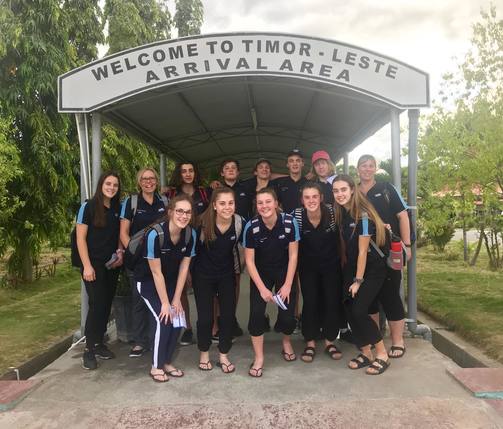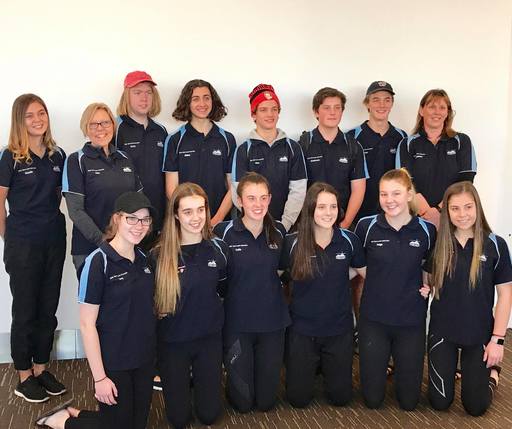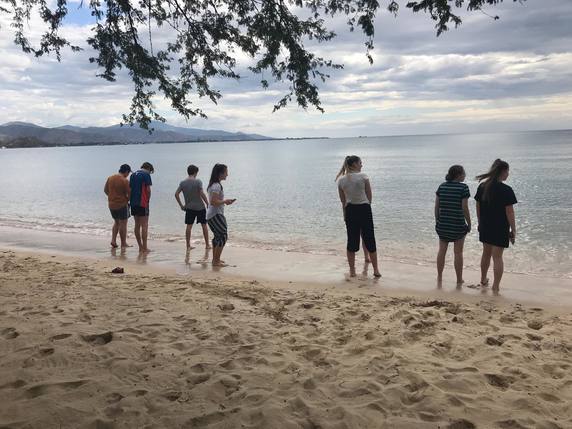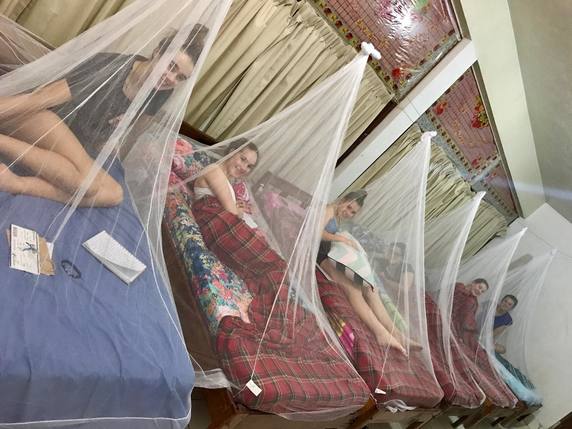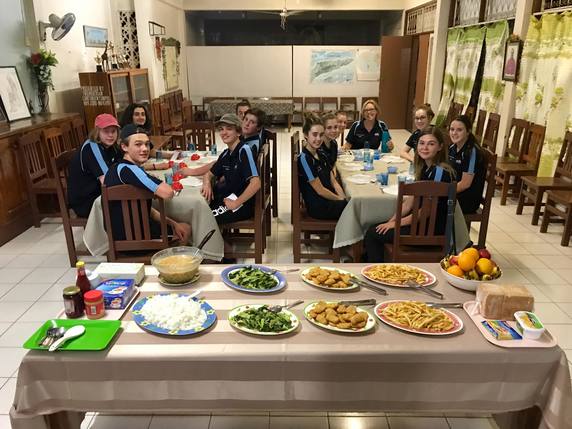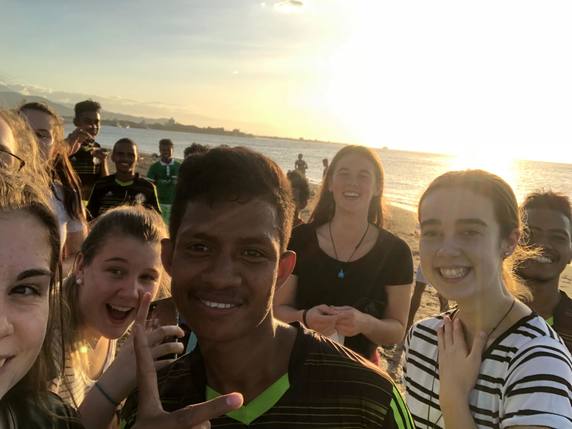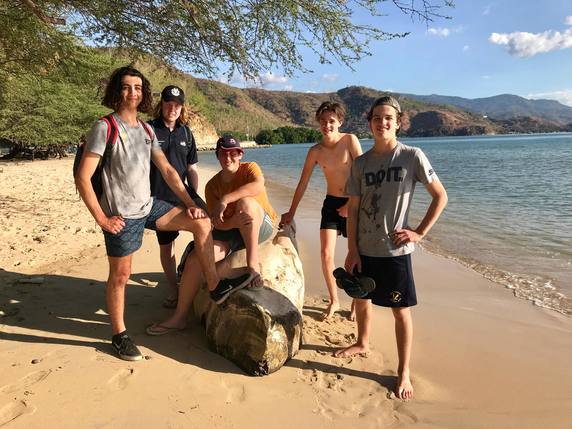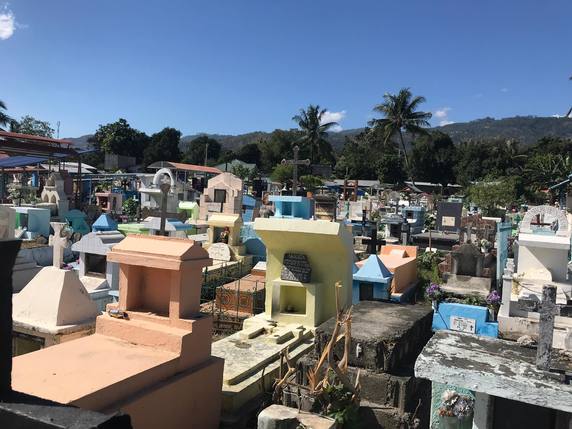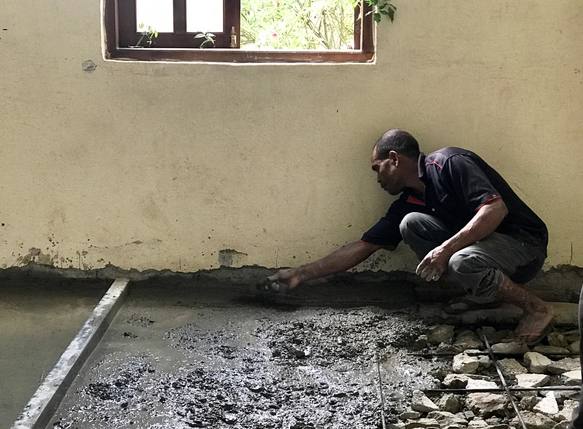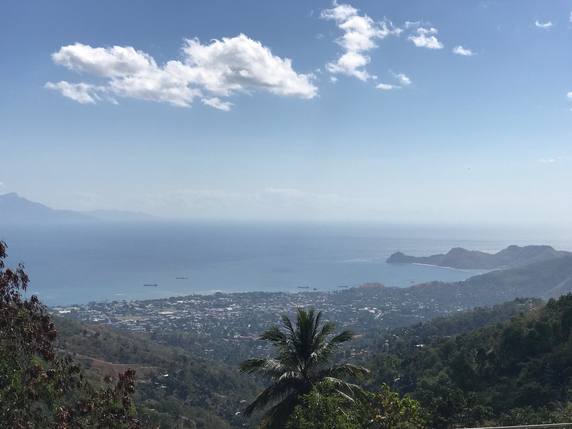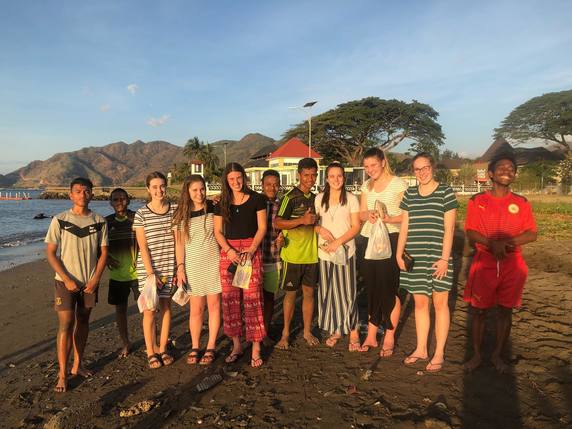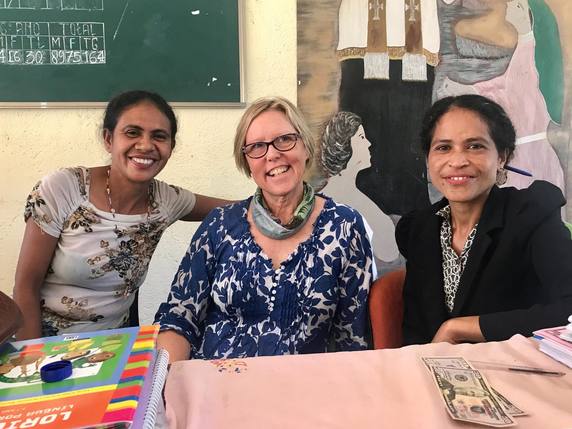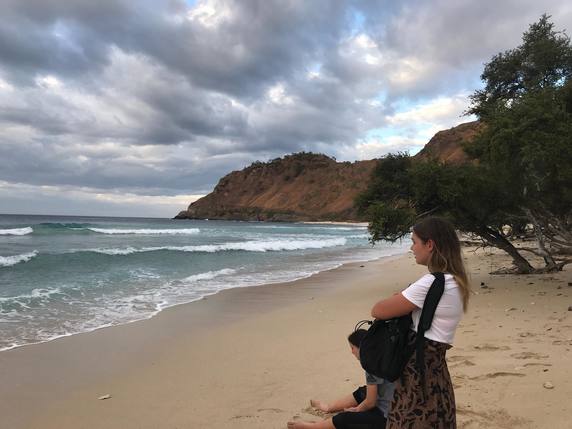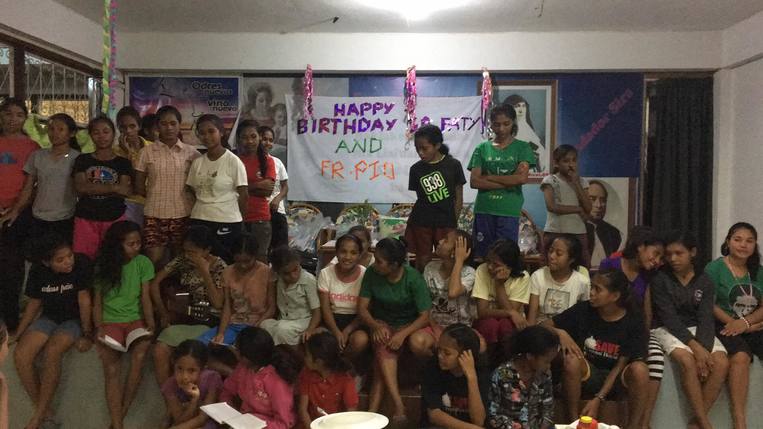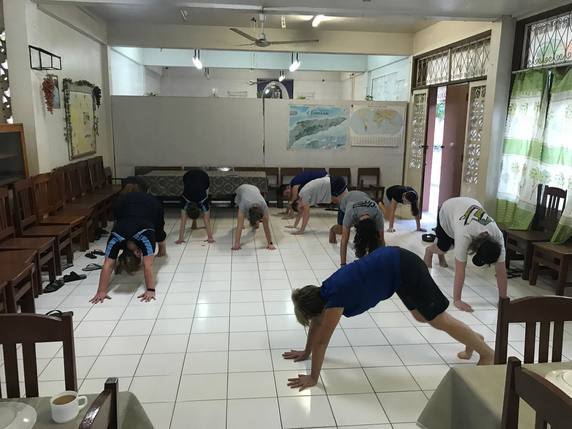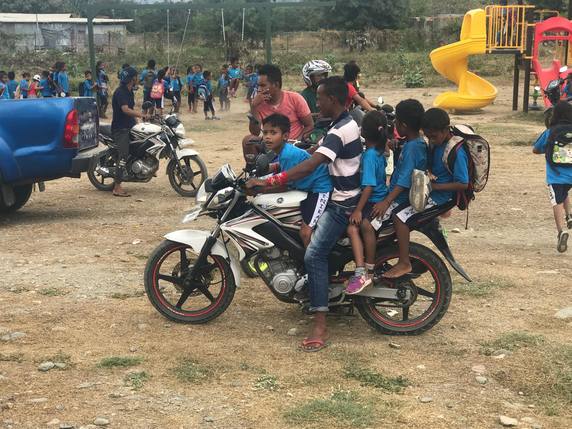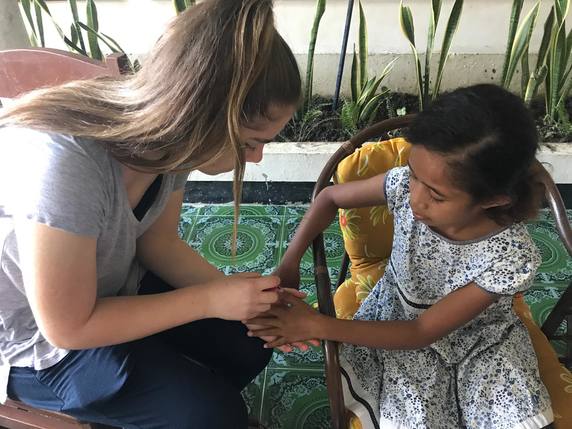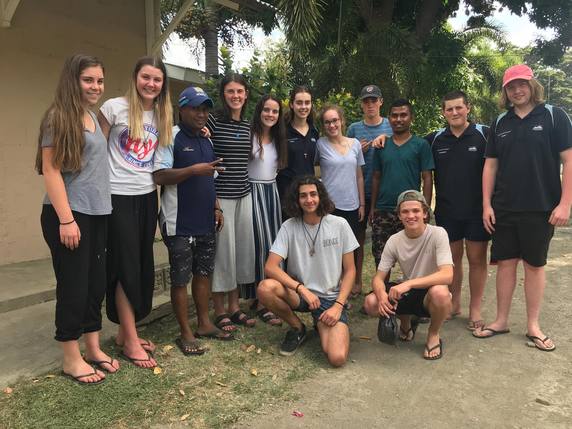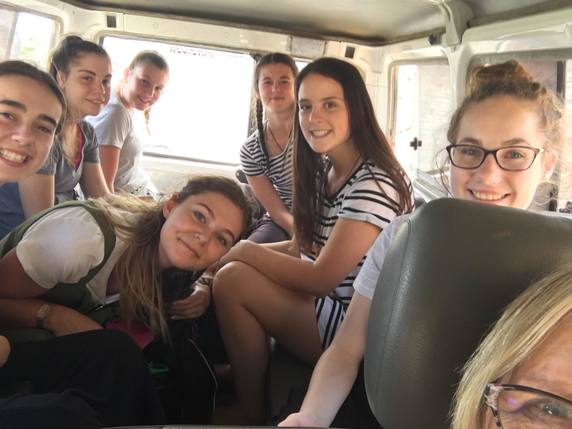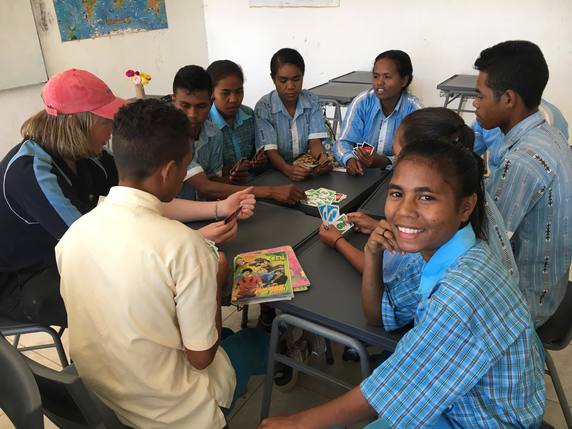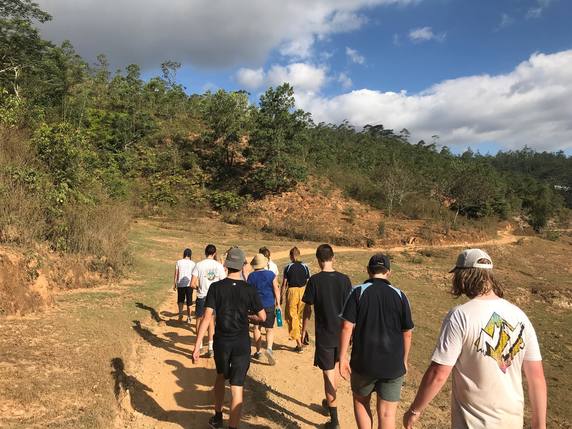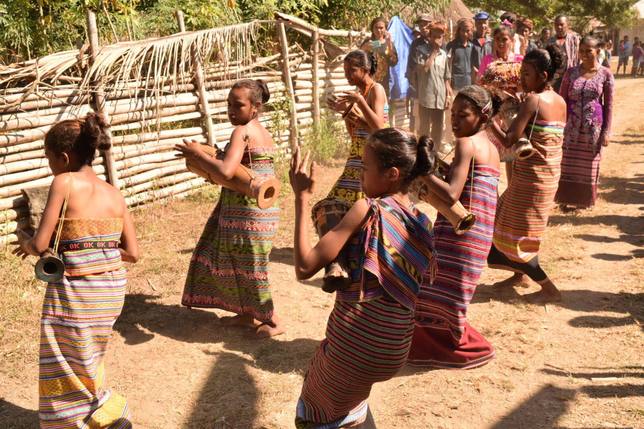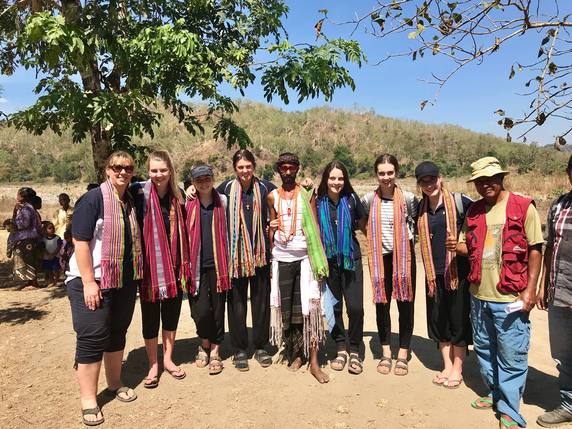Newsroom
News
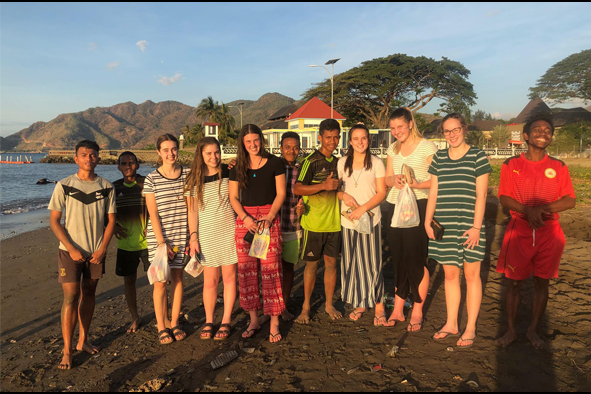
The 2018 Timor Leste Immersion
The 2018 Timor-Leste Immersion began early on a cold winter’s morning in Adelaide. Our personal luggage was loaded followed by the 6 extra bags full of stationery packs, balls, recorders and other goodies. With little time for a quick photo and good bye we boarded ready for the adventure that awaited.
We arrived to a mild Dili in the late afternoon and began the long task of filling out forms, paying taxes and collecting all our luggage We were met by our drivers, Paul and Emilio who would become kolega’s (friends) by the end of the trip. After a quick stop at Timor Plaza for supplies we travelled the short distance to the Dominican orphanage soaking in the sights and smells of Dili and the stunning foreshore along the way.
At the orphanage we were greeted warmly by Sister Fatima, and settled into our rooms before dinner. Mosquito nets were hung and toilet etiquette discussed. Before we tucked in to a meal of chicken nuggets, chips and rice we were welcomed by the children of the orphanage with words and song and were presented with a lovely handmade cross stich. The students were quick to pump up some balls and make themselves known to the children where they played until bed time at 9.00pm.
Our first full day in Timor was a busy one with the first stop at a kindergarten run by the Dominican sisters. Again, we were greeted with very exuberant and heart-warming singing, followed by a morning playing games, blowing bubbles and helping the students with the activity books we gifted the children. As a fun morning came to a close we presented the children with a stationery pack each which was very well received.
After lunch back at the orphanage we visited the resistance museum to learn more about the history of Timor from the early occupation of the Portuguese to the Indonesian occupation and the fight for independence. The next stop was the beach where we had a chance to take in the beautiful scenery and reflect on our initial impressions of Timor. Before tea, we went for a walk to explore the local area and came across a soccer training that the boys joined in on.
We began day 3 by walking the many steps to Cristo Rei, a statue of Christ gifted to the Timorese people after independence was declared. The view was stunning and couldn’t be captured in a photo. A sombre walk through the Santa Cruz cemetery followed where we reflected on the massacre that took place and prayed for the many lives that were lost and all the families that were affected. Next stop was Dare, high in the mountains, where we visited a WWII memorial with stunning views looking over Dili. After lunch we visited the Marie Stopes organisation where Karen Salter, a South Australian talked to us about the organisation and its role in family planning and maternal health in Timor. It was a very interesting talk and we learnt a lot about Timorese customs, as well as hardships girls in particular face. The day finished with another swim and playing with the children back at the orphanage.
Day 4 began with a sleep in which was appreciated by the students. This morning we visited a primary school at Hera, about a 30-minute drive from Dili. The primary school is run by the Dominican Sisters and old friend Sister Elsie. We were greeted like rock stars when we arrived and there was lots of screaming from the children and high 5’s as we walked through the school. Our students visited classrooms, played in the yard and the boys kept the students entertained with magic tricks. We gifted the recorders to a classroom here and I’m not sure the teacher was very thankful, the noise (screeching) was deafening, but the kids were loving it! School finished at lunchtime and we said a sad farewell and moved onto our next stop. Empreza Diak is a Non-Government organisation working on economic empowerment for rural communities and an ex Tension student, Fran Kirby spoke to us about the organisation. We all purchased many of the items on sale knowing that all the money was going towards building better lives for the people who made the items. Following on with the Mount Gambier connection, we visited Christine David’s who works at the St Teresa of the little flower of Jesus, in the kindergarten. We delivered some paddle pop sticks to be used for craft activities and were shown around her school. We lost the boys as they joined in a soccer game with some of the locals.
As this was our last night at the orphanage we had a party where the students sang to us and we played music and danced. The polaroid was a huge hit and everyone got lots of photos to remember us by. We gave out stationery and hygiene packs and we all went to bed a little bit sad knowing we had to say good bye in the morning.
Day 5 and we are on the move again to the Bakhita Centre, with our friend Eddie who works for the Catholic Church. We woke early and went to a local church just a short stroll from the orphanage. It was lovely to see our students scattered throughout the church sitting with friends from the orphanage. After parting gifts and letters were exchanged we were on our way. The road was very slow and rough to our destination but we made it before lunch and settled into our rooms. Eddie gave us a talk about how we can make a difference and it started with sharing our story and encouraging others to help our cause. He got us all thinking as his words settled on us before we went for a walk. It was a lazy day of laugher and card games and was just what we needed to recharge.
Day 6 was definitely the highlight of the trip. Today we visited Mulara Hatolia a very remote village that is completely isolated during the wet season. The village has had only 9 visitors in the past 19 years and we were treated like royalty. There was dancing and singing and many interesting gifts. A cow and pig was sacrificed for a huge feast and we were all appreciative and in total awe at what was presented for us. The school is in desperate need of an upgrade and it is our hope that we can help with funds and perhaps even labour for the project. We reflected on the day back at the Bakhita Centre and it was very difficult to put into words how much the day meant to us all and what we learnt from the experience.
On Sunday we attended the morning mass at Letefoho. It was standing room only and we were humbled when shown to front row seats that were saved for us. The singing that filled the church was delightful to listen to, at the end of the Tetun mass we were presented to the congregation and everyone had to introduce themselves. We had lunch at the priest’s house then had a relaxed afternoon back at the Bakhita Centre.
Day 8 saw us travelling back along the slow windy roads to Letefho to visit the High School. We were welcomed to our favourite song '10,000 Reasons’ and then joined the students in class. We participated in a variety of lessons, from maths, to a question and answer, playing UNO, soccer and volleyball. After a quick lunch back at the Bakhita centre we were off to Dili again. Timor Lodge was welcomed excitedly with western food, a warm shower and a swimming pool to waste away the afternoon.
Our last full day in Timor began with a talk at the UN where we participated in a variety of sessions pertaining to the sustainable development goals, child survival and development and sustainability. The sessions were very informative and it was great to hear about all the programs and the progress being made. A beautiful lunch at the Castaway restaurant overlooking the ocean was our last taste of Dili as we headed back to our accommodation for our final reflection and a swim.
Staff and students alike were changed profoundly by the experiences on the immersion. The people we met, their stories and the beauty of the countryside we travelled will never be forgotten. The lesson we will all take from this trip is that one person can make a difference and it starts with us sharing our story.
Bernadette Fisher | Science Teacher


